





Guava
On our counters this fruit shows exotic, however on the homeland it is very popular, first of all, because of the high content of ascorbic acid.
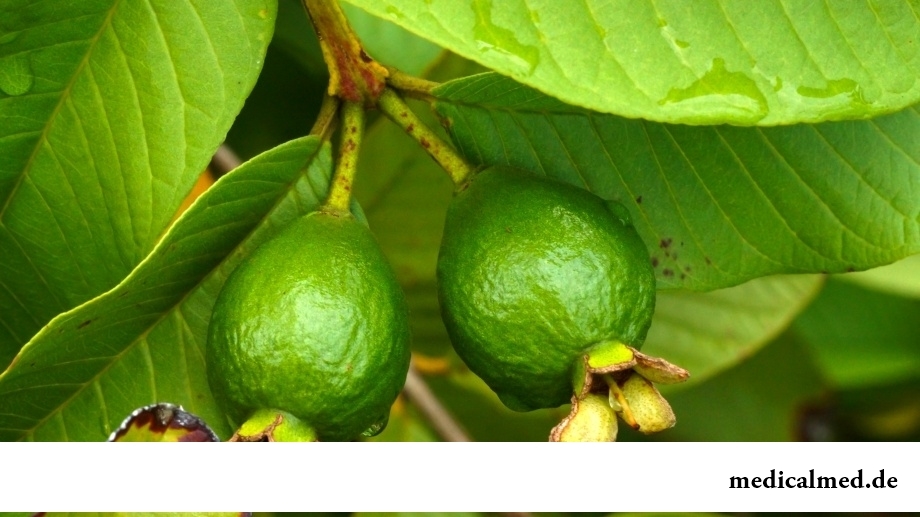
Description
Guava – a tree from family Myrtaceous. Actually, some botanists carry this plant to the category of bushes. Nevertheless, for a bush quite high – sometimes it reaches a plant in height of 20 meters, and the size of fruits can usually be compared to a tennis ball. Fruits have a thin skin, a greenish or yellowish shade, with a characteristic strong smell. On average, one fruit weighs from 90 to 130 g. Pulp of a guava has soft gentle taste and various shades. Fruits meet yellow, white, pink or bright red pulp in which there is a set of small firm round seeds.
Smell at guava fruits always pleasant though it is sometimes too strongly expressed. But in it distinctive property of a guava – if also consists, for example, in the room it is strongly smoked, it is rather simple to bring the fresh cut fruit and it will quickly kill a tobacco smell.
The homeland of a guava the American continent – South and Central America where tree fruits since ancient times were eaten by locals is considered. The first written mentioning of a plant occurs in 1553 at the Spanish historian Pedro de Siessa de León in his book "Peruvian Chronicle".
From the American continent the plant extended worldwide. The guava grows only in regions with warm climate – in tropics and subtropics. In the people it is also called tropical apple and grown up in Asia, Africa, North America, Egypt, Israel, India, Colombia now, etc.
On the homeland the guava is widely applied in cookery. From it cook various drinks, salads, puree, jams and tasty ice cream. In our latitudes the guava can preferential be tried only fresh. But even at such limited choice its taste will hardly leave somebody indifferent.
Structure and caloric content of a guava
In 100 g of a guava contains: 81 g of water, 12,5 g of carbohydrates, 5,4 g of cellulose, 2,5 g of proteins, 1,4 g of ashes, 0,9 g of fats; vitamins: And, B1, B2, RR, B5, B6, B9, With (to 240 g!), E; macrocells: phosphorus, sodium, magnesium, calcium, potassium; microelements: zinc, selenium, copper, manganese, iron.
Guava caloric content low also makes about 68 kcal on 100 g of a product.
Thus, despite low caloric content, the guava is extremely nutritious and useful. And vitamin C in it contains five times more, than in a citrus. And, the color at pulp is lighter, the it is more in it than vitamin C.
Useful properties of a guava
Thanks to the high content of ascorbic acid it is useful to use a guava for strengthening of bones and lymphatic system, and also for a raising of the general tone of an organism. Lymphatic system in general plays an important role in normal life activity. If in its work there are any failures, then it can lead even to a lethal outcome. And here it is much more difficult to support her normal sometimes, than circulatory system!
One more advantage of a guava consists in the beta carotene which is contained preferential in red fruits. And it is possible to find in some fruits even Omega-3 and Omega-6 polyunsaturated fatty acids.
The European nutritionists consider that the guava has to be present at a diet of pregnant women and the feeding women, and also small children surely.
It is important to know also about the bactericidal, antimicrobic, antiseptic and knitting properties of a guava which with success are used in traditional medicine of many countries of the world.
For example, in the countries of Latin America consider that the advantage of a guava is obvious at gastrointestinal problems, diseases of a throat and lungs. And on islands of the Atlantic Ocean it is applied at epilepsy and spasms. In some countries consider that the guava bears advantage and for heart diseases and in general it perfectly strengthens immunity and is an irreplaceable product of healthy food.
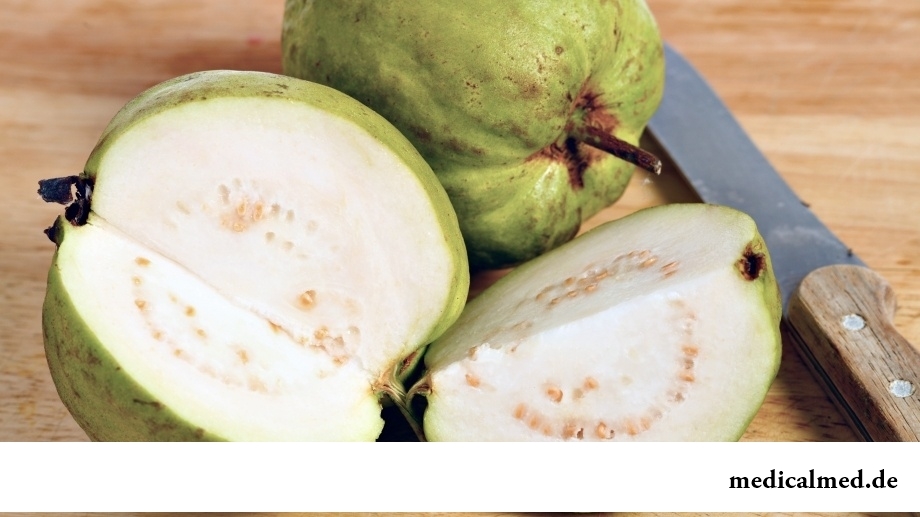
Thanks to the high content of cellulose, the guava is excellent means from locks.
In the medical purposes use not only fruits, but also leaves, bark and flowers of a plant. Leaves are made and drunk as tea at dysentery, gastric disturbances, dizzinesses and disturbances of a menstrual cycle.
At throat diseases of broth from leaves of a guava rinse a throat, apply it also at the increased temperature and cough. Outwardly broth is applied at various skin diseases, abscesses and wounds. And when tooth hurts, chew fresh leaves of a plant.
The peel of a guava contains much more antioxidants, than in its fruits so crude it is possible to refer antiallergenic, antineoplastic, antiinflammatory, soothing and spasmolytic influence to properties of a guava.
However it is worth knowing that the peel in certain cases can cause increase in level of glucose in blood therefore with care diabetics should treat it. And stones of a guava can become the reason of irritation of a throat at the excessive use of fruit.
The most rare disease – a disease the Kura. Only representatives of the tribe Faure in New Guinea are ill it. The patient dies of laughter. It is considered that eating of a human brain is an origin of a disease.
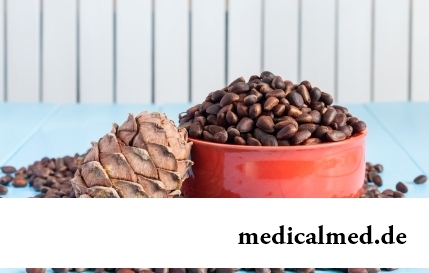
The hysteromyoma is diagnosed more than at a third of women 35 years are more senior. This high-quality new growth, which on early a stage...
Section: Articles about health
The way of life of people promptly changes from year to year: if about ten years ago the personal computer was not in each family, then today already very few people do without this device. Certainly, and children master the computer at full speed: they not only I play...
Section: Articles about health
About influence of fasting days on an organism it is told much – both about advantages, and about shortcomings. It is considered that fasting day in the form of a short-term monodiet is useful, promoting effective removal of slags from an organism whereas irregular, excessively long, spontaneous fasting days lead only to deterioration in health. How to derive benefit from the sparing diet and not to do much harm to itself? Let's consider the main advantages and shortcomings of fasting days and their influence on an org...
Section: Articles about health
Since the moment when the child becomes a school student, his sight begins to be exposed to the strengthened loadings which are supplemented viewing...
Section: Articles about health
Stability of a hormonal background is one of the most important conditions of preservation of health of the woman. At the same time endocrine system – the thin device extremely sensitive to any external influences. Changes of an image жиз can become the reason of hormonal failure...
Section: Articles about health
Coffee – favourite drink of many. For the last decades it more than once already declared very harmful, extremely useful and even necessary for normal life activity. In spite of the fact that this product became for us usual for a long time, there are many myths about properties of coffee and its impact on a human body. Readers can get acquainted with the most widespread of similar delusions today....
Section: Articles about health
The main role in development of a peptic ulcer of a stomach and duodenum the bacterium Helikobakter plays pilor. Activity and Wuxi...
Section: Articles about health
Musicotherapy – a treatment method which caused and causes a set of a controversy concerning its efficiency. However the facts are relentless: during the numerous researches curative impact of music on an organism was scientifically confirmed. Since then in a number of the countries a method...
Section: Articles about health
At this plant there are a lot of names: tuberiferous sunflower, Jerusalem artichoke, solar root, earth pear. Contrary to popular belief, it is not an exotic plant at all. The wild girasol grows in a midland of Russia practically everywhere: at the edges of roads, to slopes of ravines, on heathlands. Also several cultural versions different from wild plants are removed by larger and juicy root crops....
Section: Articles about health
To look healthy and means well-groomed not only to be pleasant to people around, but also to feel strong, sure and taken place. To Spa...
Section: Articles about health
Some people consider what for medicine of the 21st century of secrets in the field of health of the person almost does not exist. It absolutely not so. The more answers scientists receive, the more the most difficult questions are raised for them by life. Besides, there are diseases, not объясн in any way...
Section: Articles about health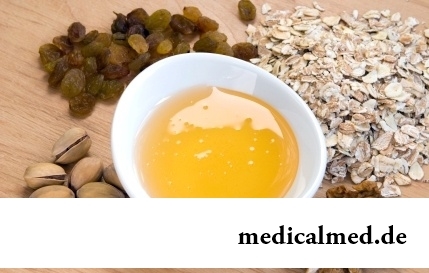
Let's begin with the fact that a separate illness which is called "adjournment of salts", just does not exist. In practice this household name of disbolism leading to development of a number of diseases. Pathological process consists that in an organism there is an accumulation of salts of uric acid (as a rule, owing to failure of a water salt metabolism or insufficiently effective work of secretory system)....
Section: Articles about health
It is pleasant to state a possibility of improvement of quality of life of people with problems of functioning of secretory system. Efforts of talented inventors created products which will be able to provide normal life activity of clients with moderate degree of a disease, it is essential to facilitate the help to patients with strongly expressed disturbances....
Section: Articles about health
Modern footwear is extremely various. It stopped being only protection for legs long ago. Today shoes, boots, barefoot persons in...
Section: Articles about health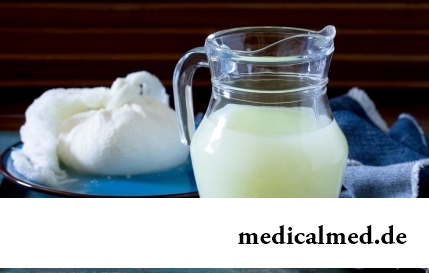
Milk and products of its processing by right occupy one of the main places in a diet of the modern person. They contain proteins, necessary for normal life activity, fats, vitamins and microelements, and are an important part of various medical diets....
Section: Articles about health
Today about 30 diseases, sexually transmitted are known. Wide circulation of these illnesses is extremely promoted by the dual attitude towards them: on the one hand, most of people know about "shameful" diseases very little and do not aim at receiving detailed and reliable information, considering that such problems personally will never concern them. With another – there are delusions about STD which instill unreasonable confidence that troubles such...
Section: Articles about health
High temperature - a frequent symptom of such widespread diseases as a SARS, quinsy, pneumonia, etc. To reduce heat, облег...
Section: Articles about health
"Epilepsy" doctors made the diagnosis in antique times. Displays of an illness and pattern of its development are very well studied. However for nonspecialists this disease remains to not less mysterious, than in the ancient time. Many delusions are connected with epilepsy...
Section: Articles about health
Cold is such painful that each sigh becomes a victory, heat "knocks" down, and the ache in joints forces to think only of pain. Some people with approach of the first symptoms of cold make the self-sacrificing decision to have a disease standing, and at best to rest in bed with a cup of hot tea. There is an opinion that if not to treat cold, then the organism itself, sooner or later, will overcome an illness. Whether so it? It is known that if in time it is simple not to begin treatment, apparently, harmless...
Section: Articles about health
The advantage of swimming for the person is so high that this sport is not only the most popular, but also is widely applied in copper...
Section: Slideshow
Bathing in broths of medical flowers and plants (phytobathtub) was eurysynusic since Cleopatra who is a good judge in all that concerns beauty and health. And today phytobathtubs is the simple and available means allowing not only to remove nervous N...
Section: Articles about health
The business lady, the become mother, it is necessary to solve an array of problems. But of them is main: how to combine the beloved child and work? What traps trap the working mother and how she needs to behave?...
Section: Slideshow
A little more than a century ago goat milk was a traditional food stuff of most of Russians. Unfortunately, today on tables...
Section: Articles about health
Smack in a mouth can arise in the natural way – as a result of lack of morning hygiene or reception of the corresponding food. However in certain cases its existence is a sign of certain pathologies, and allows to reveal an illness at an early stage. In we depend...
Section: Articles about health
It would seem, about it there can be no disagreements: water is necessary for a human body for normal life activity, and about how and when it should be drunk, all know. It turned out that the situation is not absolutely so: for many years there are very persistent delusions connected with this question. Let's consider the most widespread of them....
Section: Articles about health


